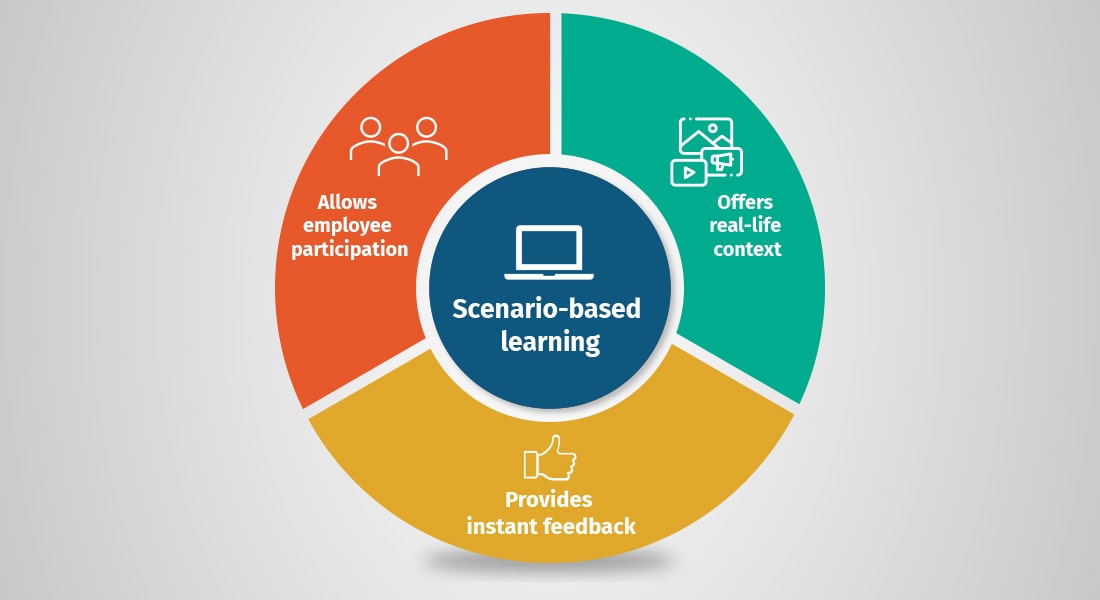Where and How to Use Scenarios in E-learning?
Scenarios in eLearning help learners to associate themselves with characters, let us see where and how to use scenarios in eLearning?

Are you facing the daunting problem of presenting heavy, dull content? Apprehensive that your learners may not be interested in the topic? Wary that the audience may not be receptive to the content? Don’t worry. The solution to all these issues is at hand. Woo your learners with Scenarios!
Scenarios depict content in the form of a dialogue between two or more people. They can be placed in the natural settings of the learners such as a conference room, lecture hall, sales showroom and so on.
Learners tend to associate themselves with the characters and hence assimilate knowledge faster. When they find their queries answered or issues discussed in scenarios, they lose their reserve and accept the content being presented.
Example Usages
Usually, employees tend to be negatively disposed towards performance management and harbor many misconceptions about it. The best way to dispel the myths is to present a scenario in which an employee spells out all his doubts and a manager sheds light on them.
We designed an online learning course for a reputed client where the employee and manager engage in a dialogue regarding the benefits of performance management. The manager outlines the advantages of actively participating in performance management, giving the employee a chance to visualize and assimilate the knowledge.

Scenarios are also well suited to put forth compliance procedures with a manager explaining the rules or procedures to be adhered to the participants. This tends to make learners more recipient towards the topic.
In another course, we used the concept of scenarios to explain the company policies to new employees.

Dos and Don’ts
However, scenarios should be used based on the demands of the course content. Here are a few pointers to be kept in mind while presenting scenarios in your elearning courses:
- Don’t overwhelm learners by having too many characters in the scenario.
- Restrict the scenario to a maximum of 7-10 points; don’t overburden the learners.
- Don’t cover extraneous points in the scenario, stick to the topic at hand.
- Make the settings and characters as realistic as possible.
- Don’t use scenarios just for the sake of variety, ensure they truly fit in there.
I hope this blog has given you a fair idea of using scenarios. Just use your judgment peppered with a little dash of caution and you are ready to create scenarios.
Happy Creation!!!





